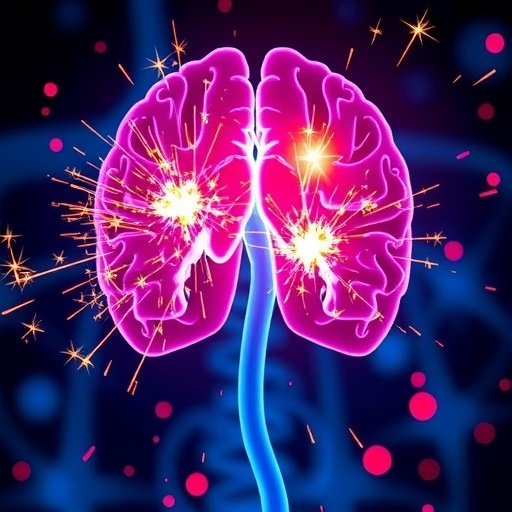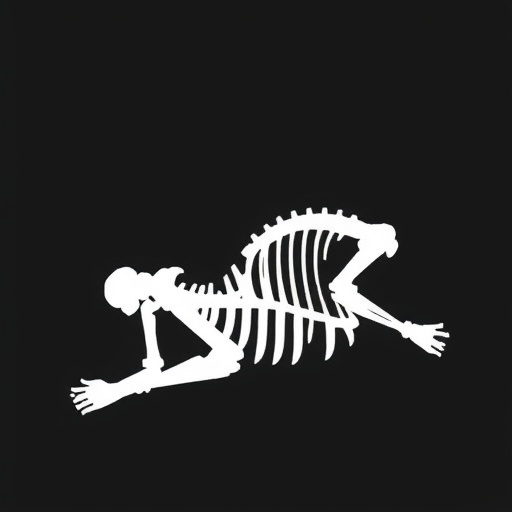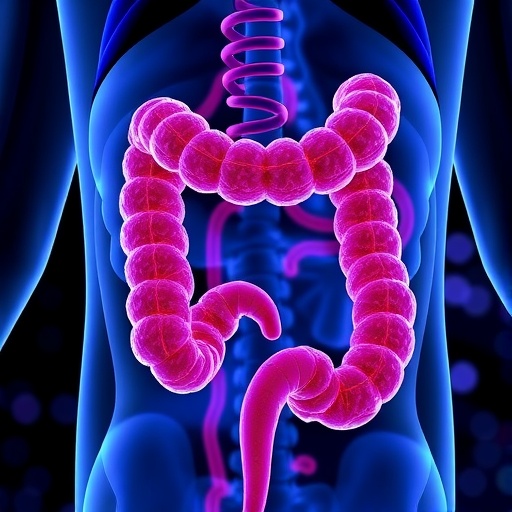
In a groundbreaking study that promises to reshape our understanding of Alzheimer’s disease (AD), researchers have identified early noradrenergic axon loss in the Locus Coeruleus (LC) as a driving factor behind one of the condition’s most elusive and early symptoms: olfactory dysfunction. Olfactory impairment, often overlooked in clinical practice, has emerged as a potential harbinger of Alzheimer’s, but the precise neural mechanisms underlying this sensory deficit have remained obscure until now. This revelation, stemming from the comprehensive work of Meyer, Niedermeier, Feyen, and colleagues, opens new avenues for early diagnosis and targeted therapeutic strategies focused on preserving noradrenergic integrity.
The human olfactory system is intricate and delicate, relying on a well-orchestrated interplay between sensory neurons, central brain nuclei, and modulatory neurotransmitter systems. One such system, orchestrated by the Locus Coeruleus, is intimately involved not only in arousal and attention but also in modulating sensory inputs, including olfaction, via its widespread noradrenergic projections. The progressive degeneration of this brainstem nucleus, which supplies norepinephrine throughout the brain, has long been documented in Alzheimer’s patients, but its direct causal role in sensory decline lacked empirical backing until this recent investigation illuminated the connection.
What the study unveils is that axonal loss originating in the Locus Coeruleus precedes and likely precipitates the olfactory dysfunction commonly observed in the earliest stages of Alzheimer’s pathology. Using state-of-the-art histological analyses and sophisticated neuroimaging in both human postmortem tissue and advanced murine Alzheimer’s models, the research team meticulously traced the degeneration of noradrenergic fibers targeting olfactory pathways. This targeted axonopathy, they found, occurs well before hallmark amyloid plaques or neurofibrillary tangles accumulate within olfactory regions, suggesting a primary pathological insult that sets the stage for subsequent neurodegenerative cascades.
.adsslot_i4sExFu8LP{width:728px !important;height:90px !important;}
@media(max-width:1199px){ .adsslot_i4sExFu8LP{width:468px !important;height:60px !important;}
}
@media(max-width:767px){ .adsslot_i4sExFu8LP{width:320px !important;height:50px !important;}
}
ADVERTISEMENT
At the core of this study lies an intricate dissection of the noradrenergic system’s architecture and its vulnerability. The Locus Coeruleus, a compact nucleus located in the dorsal pontine tegmentum, exerts neuromodulatory control by distributing norepinephrine to virtually every brain region involved in sensory processing, cognition, and emotional regulation. Its axons form dense innervations in the olfactory bulb and piriform cortex—critical hubs for odor detection and processing. The degeneration of these fibers implies a profound disruption in synaptic and circuit-level dynamics that normally mediate odor discrimination, memory, and perception, corroborating the observed defects in olfactory performance in Alzheimer’s patients.
Importantly, the study leveraged transgenic mouse models that express human Alzheimer’s disease-associated mutations, allowing researchers to longitudinally monitor noradrenergic axon integrity juxtaposed against emerging neuropathology and behavioral deficits. By employing viral tracing techniques combined with immunohistochemical staining for tyrosine hydroxylase and dopamine β-hydroxylase—enzymes integral to noradrenaline synthesis—the team quantitatively demonstrated a significant reduction in axonal density within olfactory regions prior to the onset of cognitive symptoms. This temporal dissociation underscores the prospect of a critical therapeutic window for intervention aimed at preserving neuromodulatory function.
The implications of early LC degeneration extend beyond olfactory dysfunction. The noradrenergic system is recognized as a critical modulator of neuroinflammation and synaptic plasticity. Its degeneration may exacerbate the pathological milieu, accelerating the spread of tau pathology and amyloidogenesis. Thus, the loss of LC-derived noradrenaline might contribute to a vicious cycle, wherein impaired neuromodulation promotes neurodegeneration, which in turn leads to further loss of noradrenergic fibers, compounding clinical decline. Understanding this feedback loop highlights the importance of early diagnostic markers such as olfactory testing to identify at-risk individuals before extensive neurodegeneration.
One of the most intriguing components of this research is the fine-scale anatomical mapping of noradrenergic projections using high-resolution microscopy paired with advanced computational algorithms. These methods permitted the visualization of subtle structural changes at the axonal level, revealing distinct patterns of axon thinning and fragmentation in Alzheimer’s cases. Such detailed characterization offers new biomarkers that could potentially be detected non-invasively through imaging modalities or fluid biomarkers reflective of noradrenergic dysfunction, opening the door to early diagnosis and monitoring of disease progression.
From a translational standpoint, these findings advocate for the development of therapeutic strategies aimed at stabilizing or restoring the noradrenergic system. Pharmacological agents that enhance norepinephrine signaling, neuroprotective compounds targeting axonal integrity, and novel brainstem-focused interventions might serve as promising approaches to mitigate early sensory decline and possibly delay broader cognitive impairment. The identification of olfactory dysfunction as a direct consequence of LC degeneration also supports the incorporation of smell testing into routine clinical evaluations for Alzheimer’s risk stratification.
Further research into the molecular mechanisms governing LC axon vulnerability is necessary to fully elucidate why these neurons and their projections succumb early in Alzheimer’s disease. Hypotheses include aberrant calcium homeostasis, mitochondrial dysfunction, and oxidative stress sensitizing noradrenergic neurons to protein aggregation and synaptic loss. Investigating the interplay between these cellular stressors and the genetic underpinnings of Alzheimer’s will be crucial in refining targeted interventions that can preserve LC function.
The study also sheds light on the broader role of neuromodulatory systems in neurodegenerative diseases. The concept that selective degeneration of neurotransmitter-specific axons can drive discrete functional impairments is gaining traction, with parallels in dopaminergic loss in Parkinson’s disease and cholinergic deficits in other dementias. This paradigm shift emphasizes the need to appreciate the nuanced vulnerability of neural circuits and their transmitter systems, moving beyond traditional focus on somatic neuronal loss to encompass axonal pathology.
Clinically, the ability to detect noradrenergic axonal loss through biomarkers or imaging could revolutionize early Alzheimer’s diagnosis. Olfactory testing, augmented by neuroimaging of the LC and related pathways, could serve as a cost-effective, non-invasive screening tool identifying individuals in the preclinical phase, facilitating timely therapeutic interventions. Moreover, this biomarker could be instrumental in stratifying patients for clinical trials targeting the noradrenergic system, ultimately enhancing the precision and efficacy of future treatments.
As Alzheimer’s disease continues to impose a devastating burden on global health, the unmasking of the Locus Coeruleus’ role in precipitating olfactory deficits highlights the intricate interdependencies within the brain’s circuitry that underlie cognitive decline. This research reminds us that symptoms once considered peripheral or secondary may, in fact, embody the earliest manifestations of critical neuropathology. By focusing on these early signs and their mechanistic roots, science edges closer to intercepting Alzheimer’s disease before irreversible damage ensues.
In conclusion, the discovery that early noradrenergic axon loss in the Locus Coeruleus drives olfactory dysfunction in Alzheimer’s disease represents a monumental advancement in neurodegenerative research. It bridges the gap between clinical symptomatology and molecular pathology, emphasizing the importance of neuromodulatory systems in disease inception. This enhanced understanding invites novel diagnostic frameworks and therapeutic avenues, invigorating hopes for more effective management of a condition that affects millions worldwide. The work of Meyer and colleagues sets a new benchmark, demonstrating how meticulously unraveling complex neural networks can yield insights with profound implications for diagnosis, treatment, and ultimately prevention of Alzheimer’s disease.
Subject of Research: Early noradrenergic axon loss in the Locus Coeruleus and its role in olfactory dysfunction in Alzheimer’s disease.
Article Title: Early Locus Coeruleus noradrenergic axon loss drives olfactory dysfunction in Alzheimer’s disease.
Article References:
Meyer, C., Niedermeier, T., Feyen, P.L.C. et al. Early Locus Coeruleus noradrenergic axon loss drives olfactory dysfunction in Alzheimer’s disease. Nat Commun 16, 7338 (2025). https://doi.org/10.1038/s41467-025-62500-8
Image Credits: AI Generated
Tags: Alzheimer’s diagnosis and treatmentAlzheimer’s disease early symptomsbrainstem nucleus degeneration in dementiaearly detection of Alzheimer’s diseaseLocus Coeruleus role in smellneurobiology of smell disordersneuropathology of Alzheimer’s diseasenoradrenergic axon lossolfactory dysfunction in Alzheimer’solfactory system and brain functionsensory impairment and dementiatherapeutic strategies for Alzheimer’s





